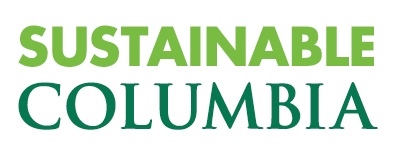Overview
The way Columbia builds significantly impacts the environment on a number of levels. With a growing campus, Columbia must be ever-mindful of the methods of building, the materials sourced, and the end-of-life treatment after demolition. This extends to both exteriors and interiors of buildings, creating harmony between sustainability and occupant comfort. In addition, building design largely determines the greenhouse gas (GHG) emissions resulting from the operation of the building over its lifetime.
Ensure that Columbia’s design, construction, and refresh processes at all campuses align with the University’s long-term goal to reduce Scope 1, 2, and 3 GHG emissions in order to achieve net zero by 2050 or sooner, and achieve zero waste.
Strategy 1: Create and adopt a Columbia policy that sets clear sustainability requirements for all elements of design and construction, pushes Columbia beyond guidelines and code, addresses perceived restraints, and ensures alignment with the University’s GHG emissions reduction goals.
Scope 1 and 2 emissions:
- Confirm timing of 100% zero emissions electricity for electrical driven systems equipment and timing of electrification of heating in order to inform engineers and designers so all new buildings and retrofits meet Local Law 97 (LL97) and the University's net zero goal by Spring 2021.
- Engage a strategic consultant to address requirements for renovations (Morningside), new builds (Manhattanville), research and lab space (Columbia University Irving Medical Center (CUIMC) and Lamont-Doherty Earth Observatory (LDEO)) by Fall 2021.
- Benchmark existing buildings to identify those that are the worst "energy offenders” and prioritize changes there.
Scope 3 emissions:
- Require that construction and demolition waste be diverted and reported to the University for all projects. Include in scope of work (SOW), requests for proposal (RFPs), and project closeout requirements.
- Pilot by 2021, scale up by 2022.
- Require electric or low-emission construction equipment rather than diesel-powered equipment that emits particulates and can have local health impacts.
- Develop a plan to better incorporate building materials made with low-carbon methods (e.g. cement, steel).
- Examine and implement take-back programs not currently being utilized to reduce waste by 2022.
- Complete screening-level inventory of Scope 3 emissions associated with design and construction, including: waste, transportation and distribution, and purchased goods and services by 2022.
- Adopt “red list” of items to be prohibited from campus by 2023.
- Set specific GHG reduction goal for design and construction by 2024. Report progress annually.
- Leverage purchasing of widely used materials in bulk contracts to reduce costs and emissions from transport by 2024.
- Increase use of the ReUse Program by examining technology solutions and improved processes.
Strategy 2: Develop action plans that provide tactical guidelines to make sustainability a part of Columbia's design and construction culture.
- Establish Sustainability Advocacy Committees in each of the following teams: Facilities and Operations, Capital Project Management (CPM), Manhattanville Development Group (MDG), Residential Operations, CUIMC, and LDEO.
- Among other responsibilities, these committees will keep an eye toward emerging climate change adaptation strategies for design.
- Each committee will develop a unique action plan with tactical guidelines to make sustainability a part of the design and construction culture.
- Collaborate with strategic communications offices to develop a public-facing communication strategy to build awareness about this work.
- Collaborate with Earth Institute capstone programs, Environmental Stewardship, and the Climate School to utilize the campus as a living lab, inviting students and faculty to help think through solutions to problems for continual improvement.
- Participate in pilot studies to help inform direction in strategies above.
- All comprehensive new construction and renovation project designs are required to meet the Leadership in Energy and Environmental Design (LEED) Silver certification level.
- All new projects are built and designed using Columbia’s sustainability design requirements.
CUIMC is aligned with all stated goals and strategies in this section.
LDEO is aligned with all stated goals and strategies in this section.
Topics: Design and Construction
Recent News: Design and Construction
Columbia Completes First Two Phases of Sustainable Design and Construction Standards Enhancement Project
Columbia and consulting firm WSP will assess, update, and create policies to deliver a new sustainability standard that ensures all building design and construction decisions are aligned with Plan 2030’s science-based targets and Local Law 97 (LL97).
Renovation Underway on Columbia's First All-Electric Undergraduate Residence Hall
Currently under renovation, Columbia University's residential building at 611 West 112th Street is a seven-story structure covering 44,533 square feet that will stand as a beacon of sustainability and modern efficiency.
Renovation Underway on All-Electric Apartment Building on 111th Street
Currently under renovation, Columbia University's apartment building for graduate students and faculty at 518 W. 111th Street is a six-story structure covering 43,000 square feet whose sustainable design and construction standards will pave the way for future renovations.


